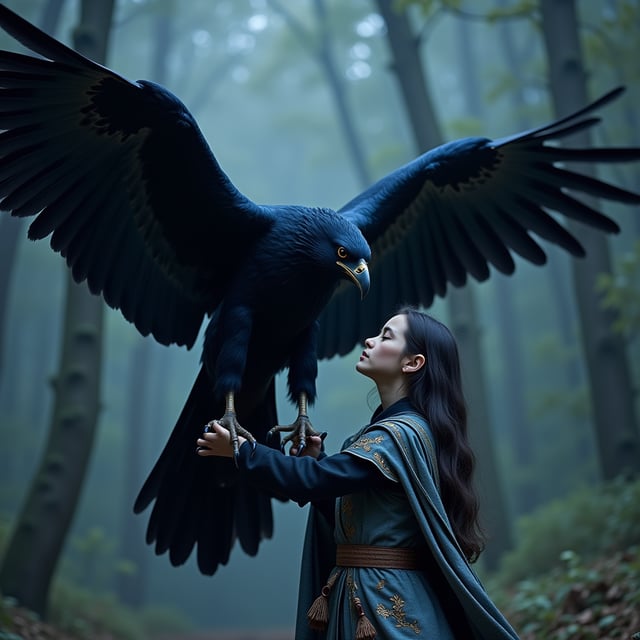Is AI Art Really Art? A Deep Dive into Picture-Generating Tools #Christmas Walkthrough #AI Tool
AI art. The new kid on the creativity block, making waves, raising eyebrows, and—let’s be real—triggering a few existential crises among traditional artists. It’s like the rebellious teenager of the art world: unpredictable, a bit misunderstood, and somehow cooler than the rest of us. But the big question looms—is it really art?Grab your coffee (or tea, I won’t judge), and let’s dive into this pixelated rabbit hole together.Art or Algorithm? That’s the QuestionFirst off, what even is art? Philosophers, artists, and your one friend who owns way too many scarves have been debating this forever. Is it about the process? The emotions it stirs? The intent behind it? Now toss AI into the mix, and things get...complicated.AI-generated art is created by algorithms trained on existing works. They take patterns, colours, and shapes, smash them together like an overenthusiastic smoothie blender, and voilà—you’ve got a digital masterpiece. Or maybe a weird, three-eyed cat. Depends on the day.But here’s the kicker: AI doesn’t feel anything. It doesn’t dream about sunsets or cry over heartbreak (unless your GPU melts mid-render). So if art is about human emotion, where does AI fit in?The Good, the Bad, and the GlitchyLet’s talk about the good stuff first. AI tools like FLUX, DALL·E, MidJourney (cough cough), and Stable Diffusion have democratized creativity. You don’t need years of art school to create something stunning—just a keyboard and a decent internet connection. Want a “flamingo playing poker on a UFO”? Type it in, and boom! Art.But (and it’s a big but)... not all AI art hits the mark. Sometimes you get dreamy landscapes, and other times you get hands with seven fingers. (I once got 12 with SD3.5- on one hand) It’s a bit like cooking—you can follow the recipe, but there’s no guarantee the soufflé won’t collapse.And then there’s the ethical gray zone. AI learns from existing art, which means it’s borrowing (some say stealing) from human artists. Imagine spending years perfecting your style, only for an algorithm to swipe it faster than a raccoon in a snack cupboard. Yeah, it stings.AI Artists: Masters or Mimics?Here’s where things get juicy. Can we call AI an “artist”? It doesn’t create with intent or purpose—it’s just following code. Think of it like a chef who only works with pre-packaged ingredients. Sure, the dish tastes good, but is it their recipe?Then again, isn’t all art a remix? Humans are inspired by the world around them—nature, other artists, TikTok trends (don’t lie, we’ve all seen it). If AI is doing the same thing, who’s to say it’s not valid?In reality, though, this discussion is not new, only the backlash is bigger.We already had apes and elephants painting flowers - which brought good money through paying customers.Pun Intended: The Fine “Art-ificial” LineThe debate over AI art boils down to this: is it about the creator or the creation? Traditionalists argue that without human emotion, it’s not real art. Others see AI as just another tool, like a paintbrush or camera—except this one can also write puns if you ask nicely.And here’s a curveball: maybe the real art isn’t the image itself, but the process of crafting the prompt. It’s like poetry—choosing the right words to summon something beautiful (or hilariously bizarre). So, if you’re the one steering the AI, doesn’t that make you the artist?I persanally feel like it's the same just different. You can never get the perfect art (I guess). Something always is amiss. 'Analogue', the material (brushes and paint, paper etc) Has certain limits. Nothing is perfect. Even a master has it all under control to the fullest. (So far, until AI surpasses us in that)Where Do We Go From Here?Whether you think AI art is brilliant or bogus, one thing’s clear: it’s here to stay. It’s opening doors to creativity we couldn’t have imagined a decade ago. Sure, it might fumble a hand or two (seriously, why are AI hands so cursed?), but it’s also pushing boundaries and sparking conversations.So, is AI art really art? The answer might be as messy as an abstract painting—and that’s okay. Art has always been about challenging norms, and maybe AI is just the next big challenge.Now, if you’ll excuse me, I’m off to ask FLUX for a “cute cat wearing a top hat in a 1920s jazz club, playing the bass.” Because if that’s not art, I don’t know what is.








